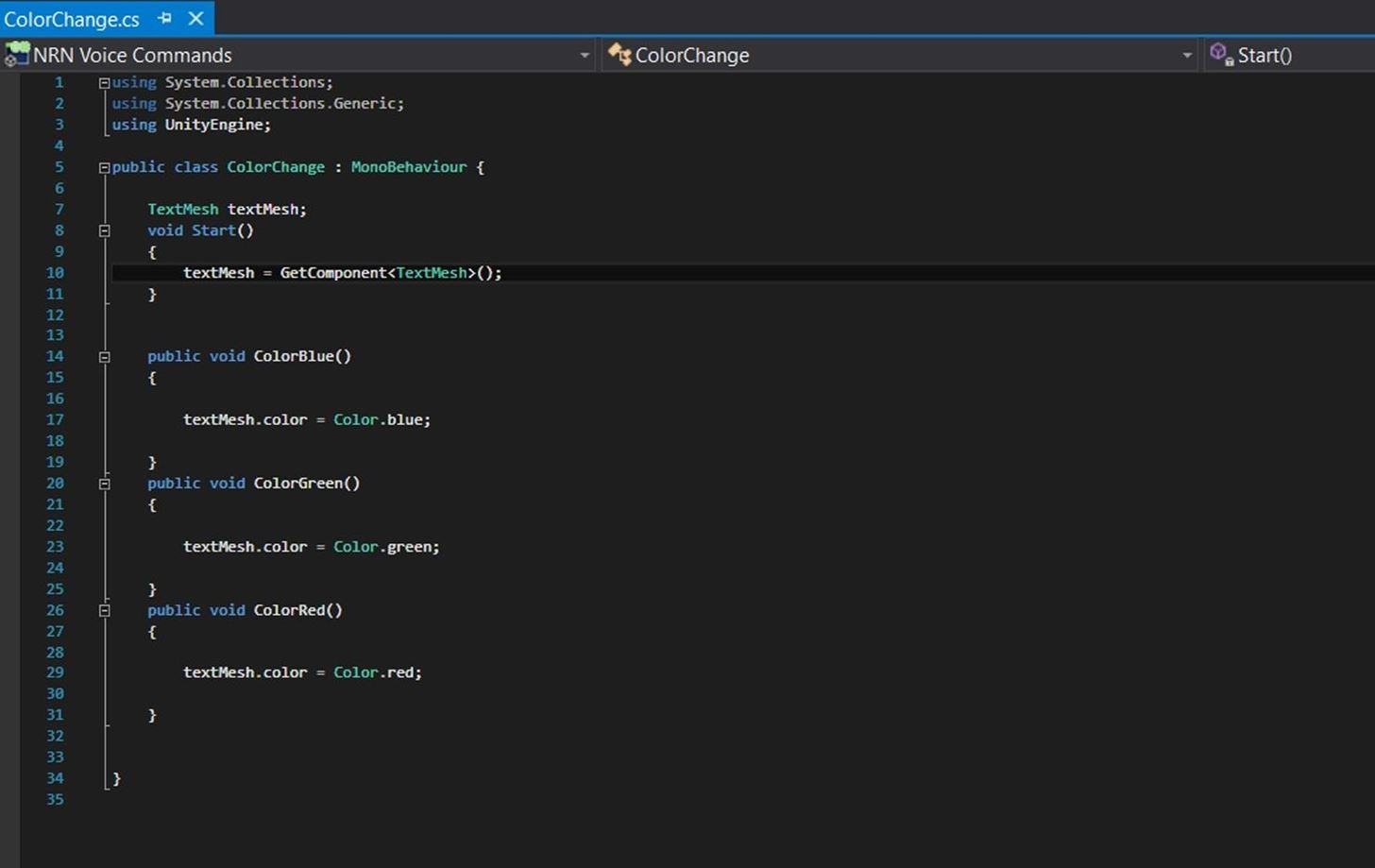
The hard part comes when you need to identify what surfaces you can use to place objects, what is a wall, what is the floor etc. The spatial grid is a relatively high definition set of polygons that make out the space the user is in. The defining factor of the HoloLens over other digital reality devices is the spatial mapping, which allows interaction between physical objects and digital assets. It provides everything from additional menu items in Unity, to pairing scripts and session management. The HoloToolkit provides some enhancements to the sharing experience, which makes it, again, just a bit simpler. Being able to see the same digital assets on two different devices in real time, while interacting with them, is incredibly powerful. The collaboration story on the HoloLens is one of the most compelling features for building real world experiences that actually will have some impact. It also gives you the option to start the keyword recognizer manually, which is very handy in the scenario where you don’t want the app to listen for voice commands. The KeywordManager script not only removes some of that plumbing code, but also provides ways to explicitly set keywords, or voice commands, in Unity rather than code. While voice commands are not difficult to implement (read my article on developing for HoloLens for more details), some of the process can be tedious. The InputManager script is 610 lines of genuine goodness that provide a bunch of plumbing for managing gaze and gestures in your app. The script then also dispatches relevant events, such as hold for a gesture and change of focus for gaze. The HoloToolkit provides an InputManager script which have a large amount of functions and features to manage the various ways a user might input data to a HoloLens app using gaze and gesture. To deliver input to a mixed reality experience, you generally rely on GGV gaze, gesture and voice. These two scripts can help you determine if users are gazing at a particular object, if there are multiple objects in the gaze direction, stabilize the gaze for precision targeting based on general direction and interpolation algorithms and more. With the toolkit you get GazeManager and GazeStabiliser. Some of the issues with capturing a user’s gaze is that they don’t hold their head 100% still and they might try to look at objects that are hidden behind other objects.
#Keyword manager holotoolkit how to#
Check out our article on negative keywords to learn how to avoid wasting precious advertising dollars.While the sheer number of scripts in the toolkit makes it out of scope to go through them in this article, I’ll outline some of the capabilities they bring. What this interface doesn’t offer, however, is a list of recommended negative keywords to begin with. This reduces wasted budget on irrelevant or non-converting keyword searches.Īdding negatives to your Google Ads account is straightforward, and can be done via the Keywords tab of the main Google Ads interface.Īs you can see, Google Ads allows you to add negatives at either the ad group or campaign level. Just as relevant keywords are crucial to the success of any PPC campaign, so too is a negative keyword list, which tells Google which terms your ads should not appear alongside. One element of keyword research that many advertisers overlook is building a negative keyword list. Finding Negative Keywords for Google Campaigns By voting up you can indicate which examples are most useful and appropriate.

#Keyword manager holotoolkit free#
Used in concert, WordStream’s Free Keyword Tool and the Google Keyword Tool (now called Keyword Planner) are an excellent combination for advertisers seeking to exert greater control over their keyword advertising strategies and see greater return on investment from their advertising budget. Here are the examples of the csharp api class () taken from open source projects. CPC – An estimate of the average cost per click of each keyword in Google Ads.

Competition Level – Understand how competitive your keywords are a higher competition level usually corresponds to higher costs per click.Opportunity Score – This proprietary metric helps you easily identify the keywords with the highest potential to drive results, so you can prioritize your search marketing efforts.These additional metrics, which are especially valuable to businesses doing paid search advertising, include:


 0 kommentar(er)
0 kommentar(er)
